|
Spring 2021
WHRC COMMITTEE & STAFF
Chairman: Hope Royer
Committee Members: Mary Baird, Carolyn Forbes
International President: Marian St.Clair
In this issue we begin to highlight historic State Federation Headquarters buildings.
State Federation Presidents, please contact WHRC Committee Chairman Hope Royer if you would like to share information on your building.
The Sims-Stackhouse Mansion in Columbia, South Carolina
By Hope Royer, GFWC WHRC Committee Chairman
With appreciation to Ann Malpass, GFWC South Carolina Headquarters Committee Chairman
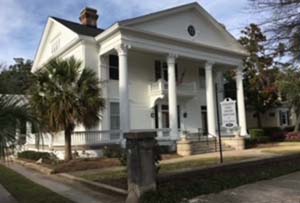
The Sims-Stackhouse Mansion in Columbia, South Carolina, not only has an unusual history, but one that is related closely to GFWC South Carolina. Built before 1853 for James and Eliza Rebecca Sims, the two-story Corinthian-columned mansion once sat within the middle of the 1500 block of Laurel Street, and it looked different than it does today. In 1909, Columbia banker T.B. Stackhouse purchased the property, removed the floors above an original raised basement, and relocated them one lot west to the home’s current location at 1511 Laurel Street. At the time of his death in 1934, Stackhouse bequeathed the home to the City of Columbia for use by the General Federation of Women’s Clubs. GFWC South Carolina has maintained the mansion as its state headquarters since that time. In2000, the house was deeded by the city to GFWC South Carolina. Of interesting historic note is the fact that the Sims’ home was spared during the burning of Columbia in 1865 and its capture during the Carolinas Campaign of the American Civil War. It was the only home in the area left standing. (It is said that Mr. Sims’ daughter was secretly dating a Yankee soldier.)
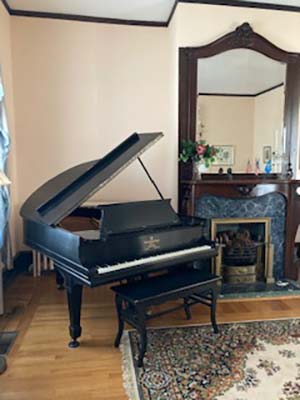
To help defray expenses, approximately 2,000 square feet of indoor space, including a central foyer, parlor, music room, dining room, and kitchen, is available for event rental. The mahogany wainscoted dining room seats 14. All of the furniture in the mansion is original to the Stackhouse family. The Grandfather clock and Steinway Grand piano are especially noteworthy.
Contributions to GFWC South Carolina’s 1511 Society offer each clubwoman an opportunity to support the many needs of the Sims-Stackhouse Mansion. The Society’s 2021 Annual Campaign reminded members “As in any home there are constantly maintenance issues, but it seems that our grand old house is really showing its age. At this time, just $15.11 from each GFWC-SC clubwoman would make a BIG difference and allow much needed work to move forward.”
Early Gifts to GFWC Headquarters
By Hope Royer, WHRC Committee Chairman
Gifts for furnishing and decorating the newly purchased GFWC Headquarters building were donated from Federations and clubs across the country and world. Among the very first gifts presented was a Persian rug made in Tabriz, Persia, by children in an orphanage. There had been special interest in the Near East during the 1920 GFWC Convention, and delegates had resolved to help save Armenian orphans. It was speculated in 1922 that the children who made the rug were descendants of Armenians who were brought to Persia by a 17th century ruler, Shah Abbas, to build up the industrial life of his country. Other early gifts included furnishings for the drawing room donated by the Massachusetts Federation in honor of Massachusetts clubwoman Julia Ward Howe.
Notable gifts in the Music Room include the painting of Mt. McKinley (now Denali) by Sydney Laurence that was donated by the Alaska Federation in 1923. Laurence, a renowned artist and war correspondent, was well known for his Alaskan landscapes. The Herschede hall clock, also given in 1923, was provided by the Connecticut Federation. In 1925, the painting “In the Arroyo” by Alson Clark was given by the California Federation. In 1927, the Nebraska Federation donated Revolutionary War-era coffee and tea urns for the Dining Room. The WHRC Archives is ornamented by a 1925 pastel of Mrs. Hugh Reid Griffin by Anna Elizabeth Klumpke (1856-1942). Mrs. Griffin, originally from Chicago, founded the Society of American Women in London in 1899,which was the first American Woman’s Club in Europe.
Gifts to Headquarters from State Federations and clubs have continued throughout the years. Why not search your State Federation and club archives to discover what your State Federation or club has presented?
Famous Firsts
By Carolyn Forbes, WHRC Committee Member
Women’s achievements are often overlooked. It is important to acknowledge their triumphs and set them up as role models for the next generation of girls. The following information highlights many of the notable women with ties to GFWC.
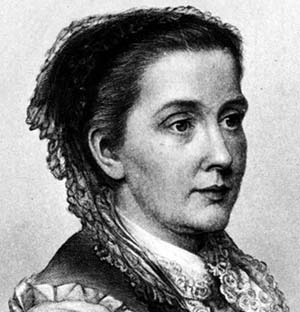
In 1890, Julia Ward Howe (GFWC Massachusetts) helped author the GFWC Constitution. She wrote the Battle Hymn of the Republic and inspired the creation of Mother’s Day. She was also an advocate for abolitionism and a social activist, particularly for women’s suffrage.
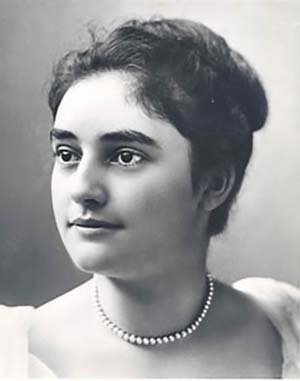
Thomas Edison’s wife Mina (GFWC New Jersey) hosted the first GFWC council meeting in 1891 at their home in West Orange, New Jersey. After a luncheon, Edison invited delegates to his lab for a demonstration of the kinetoscope, an early motion picture projector. Mina gave her talents to the surrounding communities, working tirelessly on various social, educational, religious, and community causes for the benefits of citizens.
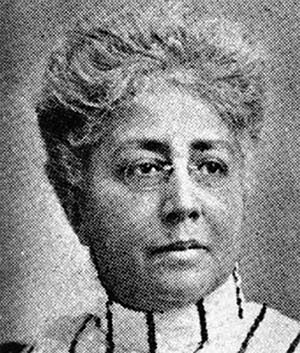
Josephine Ruffin used her financial security and organizational abilities to start The Women’s Era, the country’s first newspaper published by and for African-American Women. In 1900, GFWC met in Milwaukee, Wisconsin. Josephine tried to attend as a representative of three Boston organizations: the New Era Club, the New England Women’s Club, and the New England Women’s Press Club. Ruffin was told she could be seated as an honorary representative of the two predominantly white clubs, but not as a representative of the Black club. She refused on principle and was excluded from the proceedings. This event became known as “The Ruffin Incident” and was widely covered in newspapers around the country.

Julia Lathrop (GFWC Illinois) was an American social reformer in the area of education, social policy, and children’s welfare. Appointed by President Taft in 1912 as director of the United States Children’s Bureau, she was the first woman to head a U.S. federal bureau.
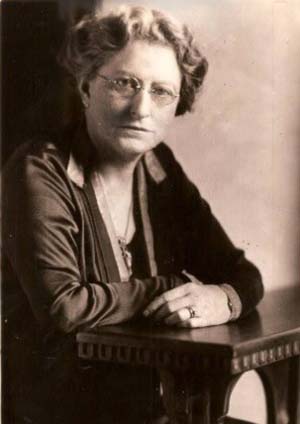
Mary Belle King Sherman (GFWC Colorado), a GFWC Conservation Chairman from 1914-1916, helped create the National Park Service. She was the only woman on the National War Gardens commission and established National Garden Week. In 1924, she was elected president of GFWC.
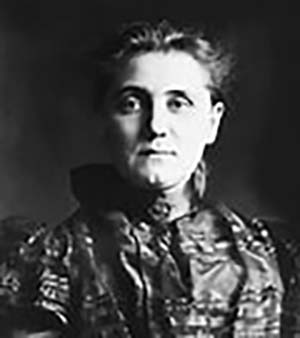
Jane Addams, social worker and feminist, was the first American woman to receive a Nobel Peace Prize. She received her award for her efforts to advance peace in 1931.

Emily Greene Balch was an American economist and sociologist as well as a friend and co-worker of Jane Addams, who also worked on social issues. She helped found the Women’s International League for Peace and Freedom. She won her Nobel Peace Prize in 1946. Both had ties to GFWC.

In 2008, GFWC advocated for the bipartisan pay equality bill on the discrimination case of Lilly Ledbetter (GFWC Alabama). Barack Obama signed the Lilly Ledbetter Fair Pay Act in January 2009. In 2011, Ledbetter was inducted into the National Women’s Hall of Fame.
These women are but a few of the examples of women throughout history who have had an effect on the world around them. Women wield a great deal of influence in this world, but it often goes unseen. From making a house into a home, molding children into the future of tomorrow, to changing the course of an entire nation, women should not be overlooked for the impact they have on the path of humanity.
Tea Time and Takeout
By Hope Royer, WHRC Committee Chairman
Shortly after purchasing 1734 N Street in 1922, GFWC converted the area behind Headquarters, where General Miles had housed his horses, into the Federation Tea Room. The idea was to “bring GFWC into closer contact with the many earnest, thinking women and men who may be permanent or transient residents of Washington.” High tea, described as “elaborate,” and low tea, noted as “a cup of tea and either tea cake or gingerbread,” were offered each afternoon in the tea house and garden, weather permitting. The cost was $1.50 for high tea and 50 cents for low tea. Dinner was served during evening hours for $3 per plate. Responding to a growing demand in the neighborhood, the tea room manager provided chicken shortcake and pastry “fresh from the oven” wrapped in heavy waxed paper so that it could be “carried away.” GFWC’s Tea Room became the first restaurant in Washington, D.C. to serve takeout meals!
Arts, Culture, and the Clubwoman
By Marian St.Clair, International President
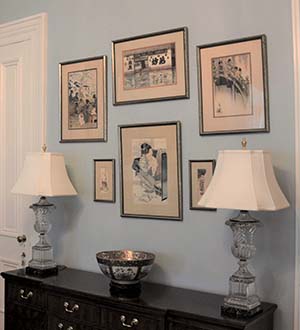
Among its many treasures, GFWC has several art collections that date to the early 20th Century. One is a group of woodblock prints by Helen Hyde (1868-1919), an American etcher and printmaker who is best known for her depictions of women and children in domestic settings.
Until recently, GFWC’s collection of 21 Hyde woodblock prints, including 14 created in Japan and seven scenes in Mexico, were displayed in the GFWC Headquarters building at 1728 N Street. Earlier this year, the Executive Committee decided to move a part of the collection to the President’s Office, where they can be seen more readily by members and guests.
In the well-lit office against freshly-painted walls in a soft shade of tranquil blue, the prints are lively and engaging. Interestingly, many have names on the back of their frames and some show an original price that ranges between five dollars and twenty dollars.
All of the Hyde prints are a legacy of GFWC’s early promotion of the inspirational and educational value of various forms of art. Formally established at the Fourth Biennial Convention in 1898, the GFWC Art Committee quickly became popular with clubs and State Federations. By February 1906, the first “Traveling Gallery of Paintings and Etchings” had been organized, including 80 oil and watercolor paintings, woodblock prints, and etchings.
This first traveling gallery and those that followed in subsequent years were sent to clubs across the country for a one week free exhibition. Members were urged to invite school children and the community to view the art in hopes that “a greater knowledge of noble and beautiful things” would result in “higher ideals for mankind.”
An inventory of the first traveling gallery, printed in the March 1906 issue of the Federation Bulletin, noted that it contained eight colored woodblock prints by Helen Hyde. Eighteen years later, in 1924, the Federation compiled an exhibit devoted exclusively to the artist, which featured 40 colored woodblock prints of Japanese and Mexican subjects.
Born in New York and later raised in the San Francisco Bay Area of California, Hyde attended the California School of Design before studying art in Berlin, New York, and Paris. As her talents developed, she was inspired by French Japonisme and the work of American Impressionist Mary Cassatt, which frequently highlighted the intimate bond between mother and child.
When Hyde returned to San Francisco, she began sketching women and children in Chinatown and joined a local association for professional women artists where she was encouraged in her experiments with etching. In 1899, she traveled to Tokyo to study Japanese painting and printmaking. Captivated by the culture, Hyde made her home in Japan for most of the next 15 years. During that time she also traveled to China, India, and Mexico.
The artist left Japan in 1914, as she was becoming progressively ill with cancer and because she felt Japan had lost its pre-modern charm with the rise of western development and industrialization. Hyde returned to the United States, where she died five years later at the age of 51.
After her death, Hyde’s friends preserved her legacy by documenting her work, ensuring that copies of her prints were donated to museums, and by conserving her printmaking tools and correspondence with the California Historical Society. Currently, a large collection of her works are held by the Library of Congress in Washington, D.C.
Helen Hyde’s original prints, now sought by collectors of American woodblock prints and turn-of-the-century female art enthusiasts, are occasionally offered for sale by galleries and auction houses. A few, such as Blossom Time in Tokyo, one of my favorites in the GFWC collection, have been replicated and can be found online as reproduction art prints or posters. |